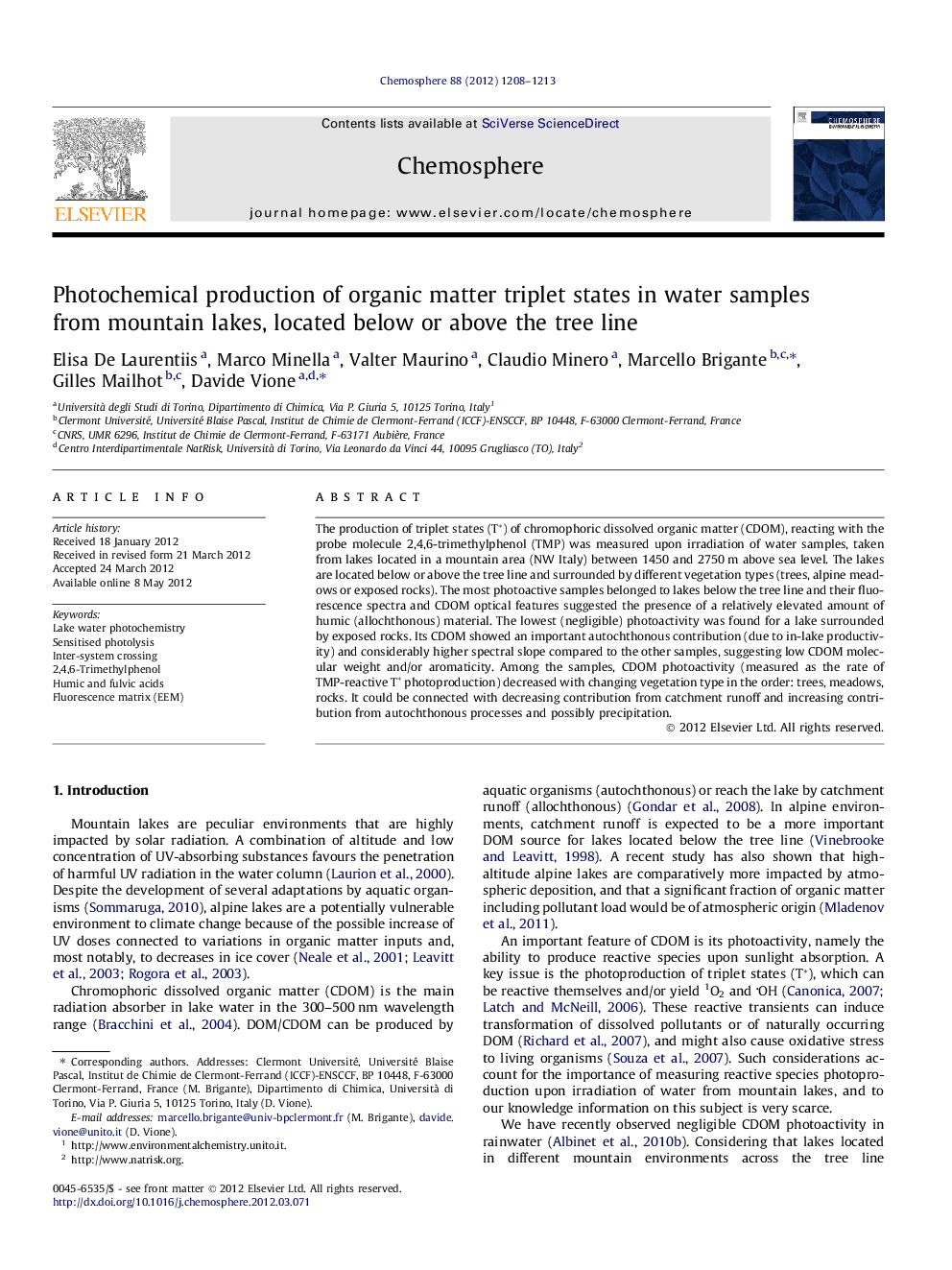| Article ID | Journal | Published Year | Pages | File Type |
|---|---|---|---|---|
| 4409800 | Chemosphere | 2012 | 6 Pages |
The production of triplet states (T*) of chromophoric dissolved organic matter (CDOM), reacting with the probe molecule 2,4,6-trimethylphenol (TMP) was measured upon irradiation of water samples, taken from lakes located in a mountain area (NW Italy) between 1450 and 2750 m above sea level. The lakes are located below or above the tree line and surrounded by different vegetation types (trees, alpine meadows or exposed rocks). The most photoactive samples belonged to lakes below the tree line and their fluorescence spectra and CDOM optical features suggested the presence of a relatively elevated amount of humic (allochthonous) material. The lowest (negligible) photoactivity was found for a lake surrounded by exposed rocks. Its CDOM showed an important autochthonous contribution (due to in-lake productivity) and considerably higher spectral slope compared to the other samples, suggesting low CDOM molecular weight and/or aromaticity. Among the samples, CDOM photoactivity (measured as the rate of TMP-reactive T* photoproduction) decreased with changing vegetation type in the order: trees, meadows, rocks. It could be connected with decreasing contribution from catchment runoff and increasing contribution from autochthonous processes and possibly precipitation.
Graphical abstractFigure optionsDownload full-size imageDownload as PowerPoint slideHighlights► Assessment of organic matter photoactivity in mountain lakes. ► Important differences in lakes below or above the tree line. ► Different contributions from catchment runoff and in-lake productivity. ► Connection between the environment around the lake and photochemistry. ► Fluorescence characterisation of autochthonous and allochthonous organic matter.
